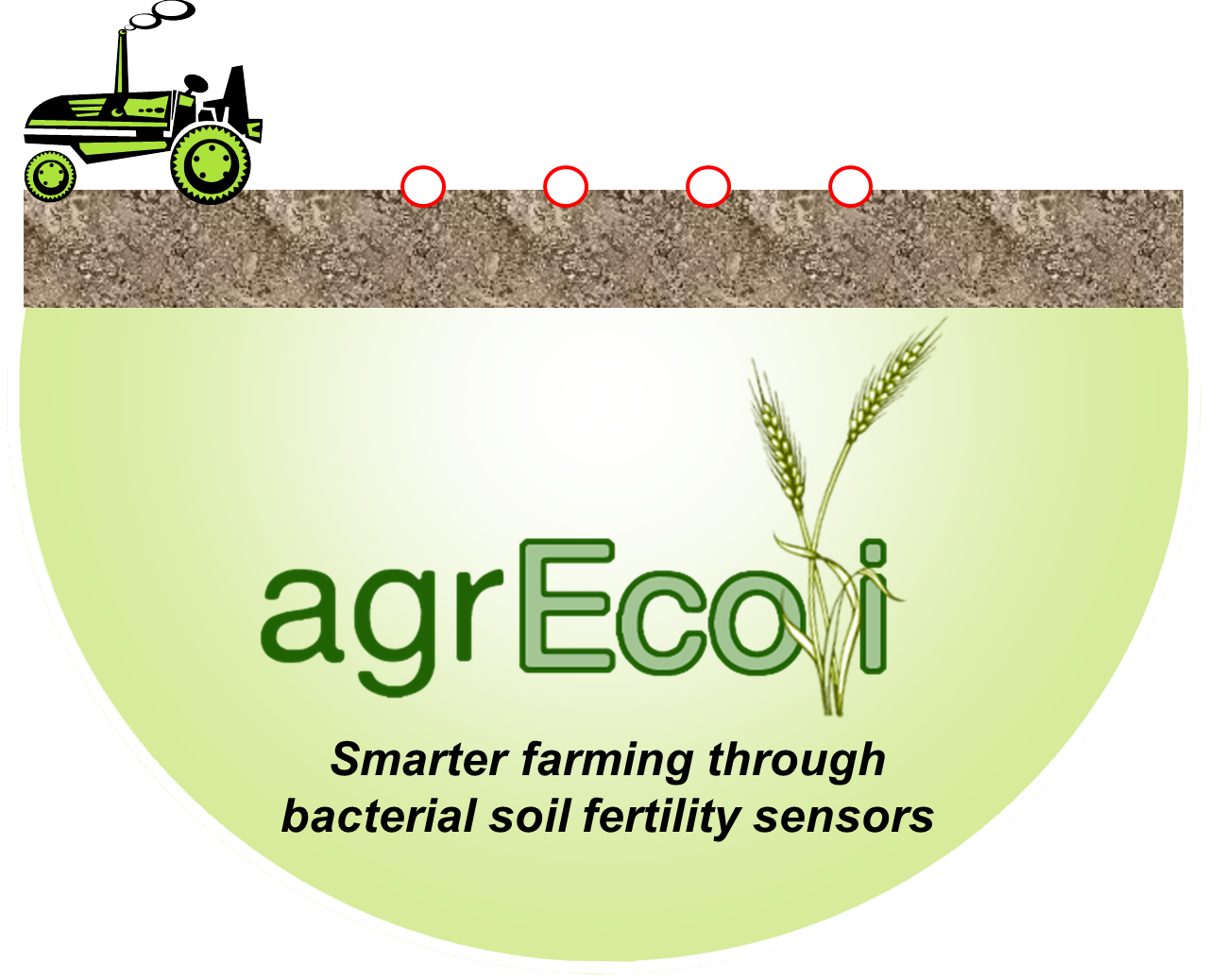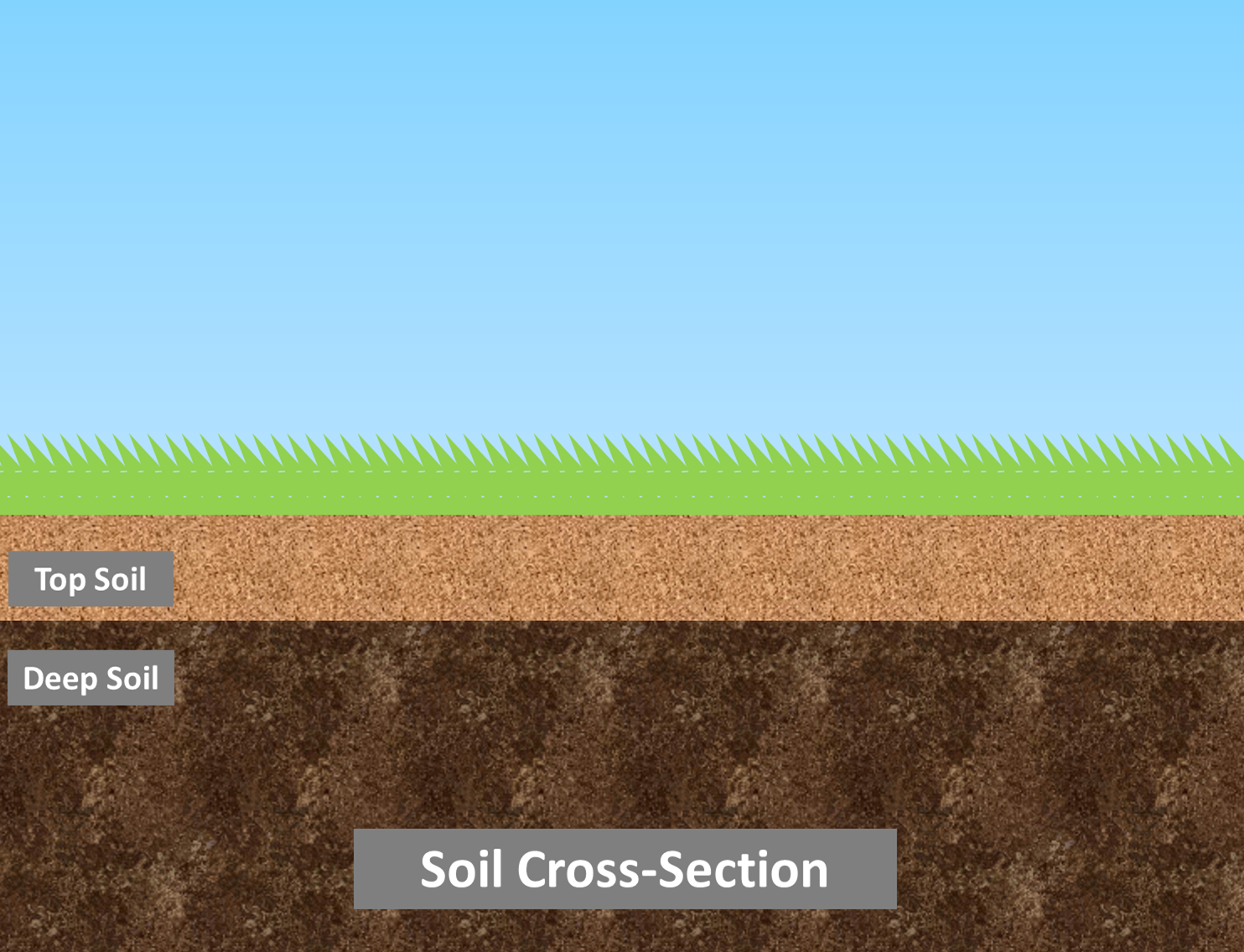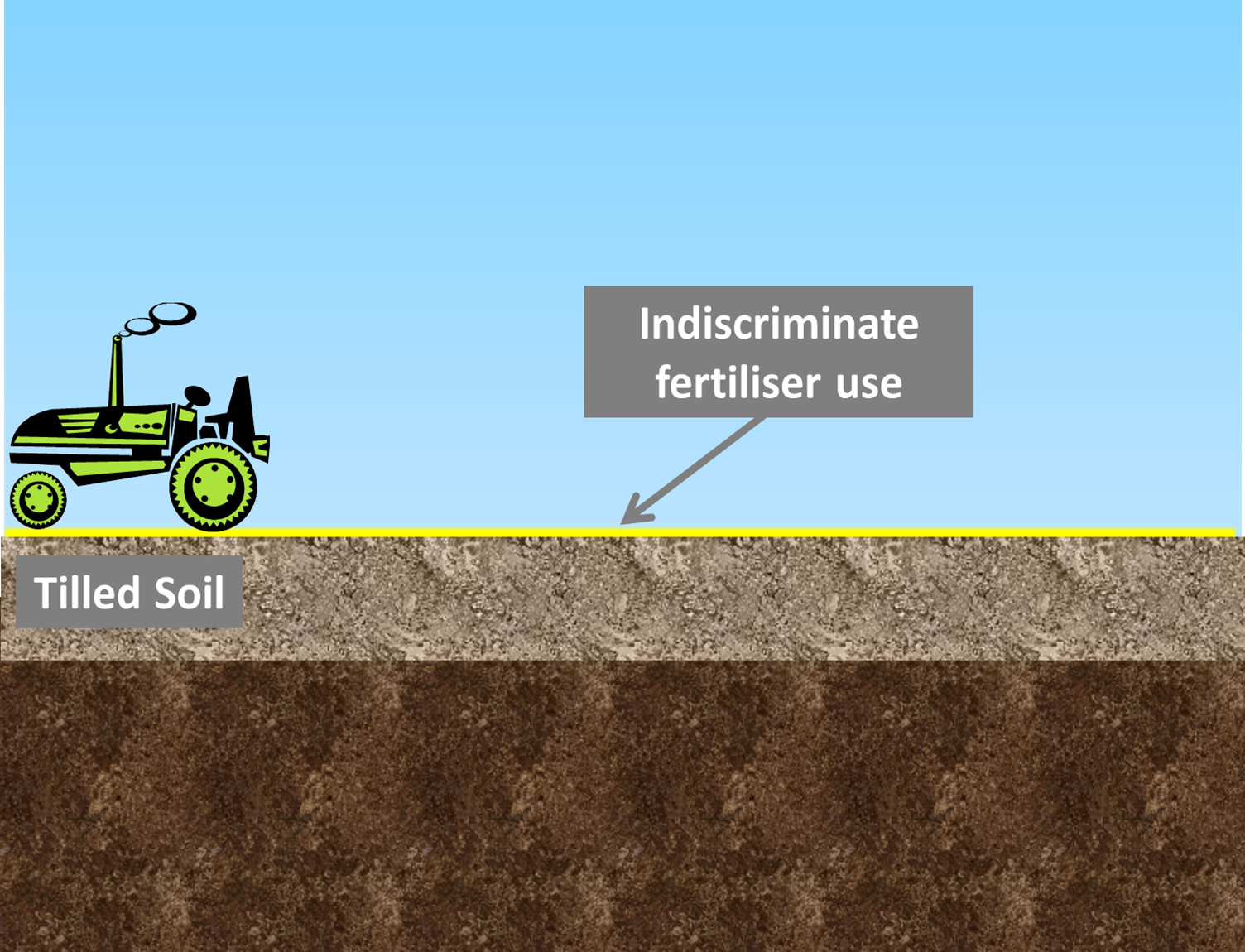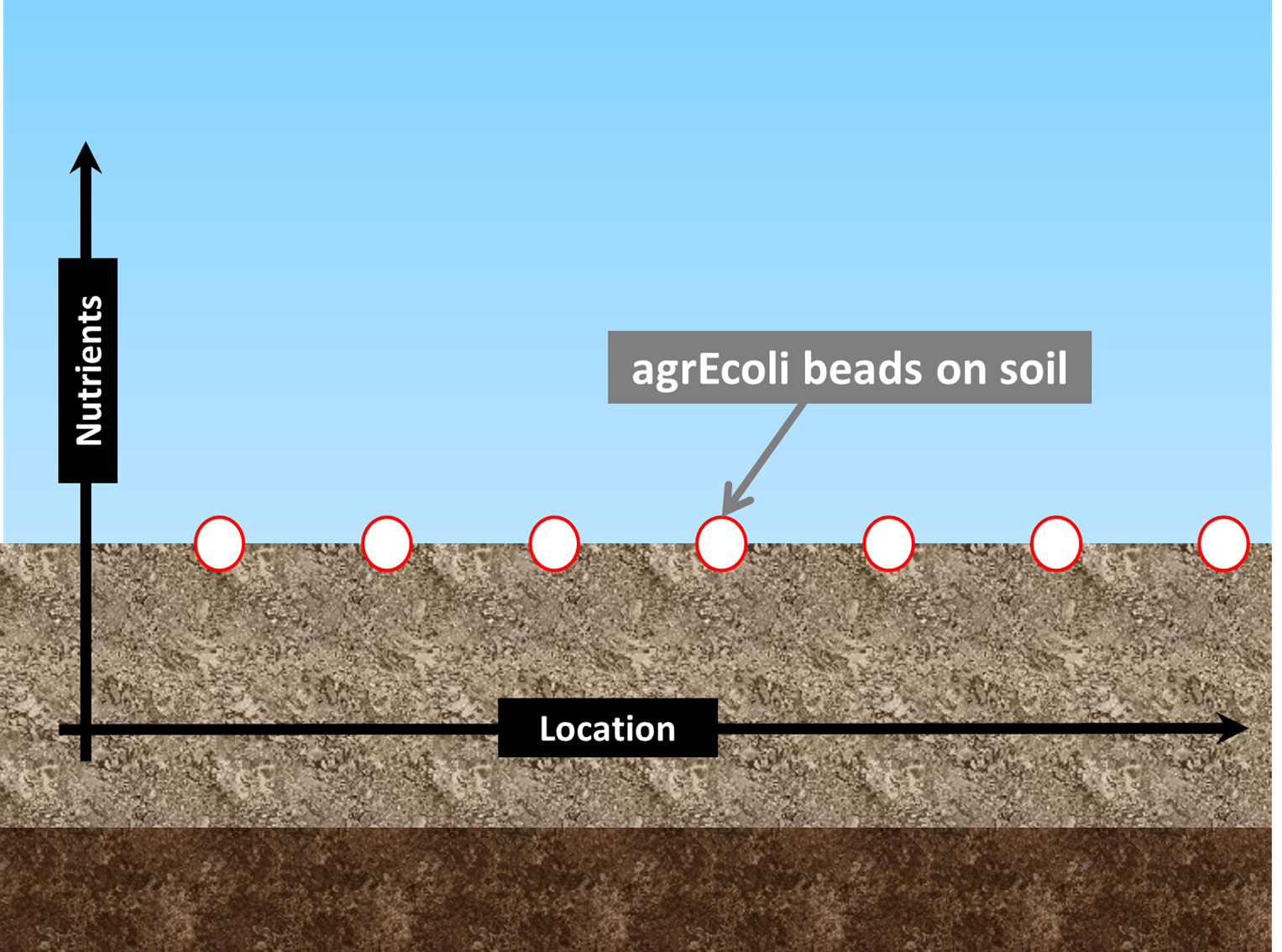Team:BCCS-Bristol
From 2010.igem.org
BCCS-Bristol
iGEM 2010
iGEM 2010
How does agrEcoli work?
| Imagine viewing a cross section of the soil in a field. The topsoil is usually depleted in nutrients. Before the fertilisation process begins, the crops are harvested, leaving open soil. | |
| Next, farmers ‘till’ the soil, replacing the topsoil with deeper, more nutrient-rich soil. Usually farmers will then indiscriminately fertilise the entire field. This is wasteful, as some fertiliser will land on areas which already have abundant nutrient levels. | |
| Instead, we plan to spread agrEcoli bacteria, encapsulated in beads, onto the soil. Since the topsoil has been tilled, it is representative of deeper soil. | |
| agrEcoli bacteria express RFP constitutively, and express GFP in the presence of nitrates. By using a UV light and spectrophotometer attached to a tractor, farmers can infer the nutrient level of soil from the ratio of Red to Green detected. | |
| Using agrEcoli, farmers can map the nutrient content of their fields. This means they can fertilise only the areas that need it, saving up to £45 per hectare [1]. |
References
| [1] | SoylSense Home page |
 "
"




